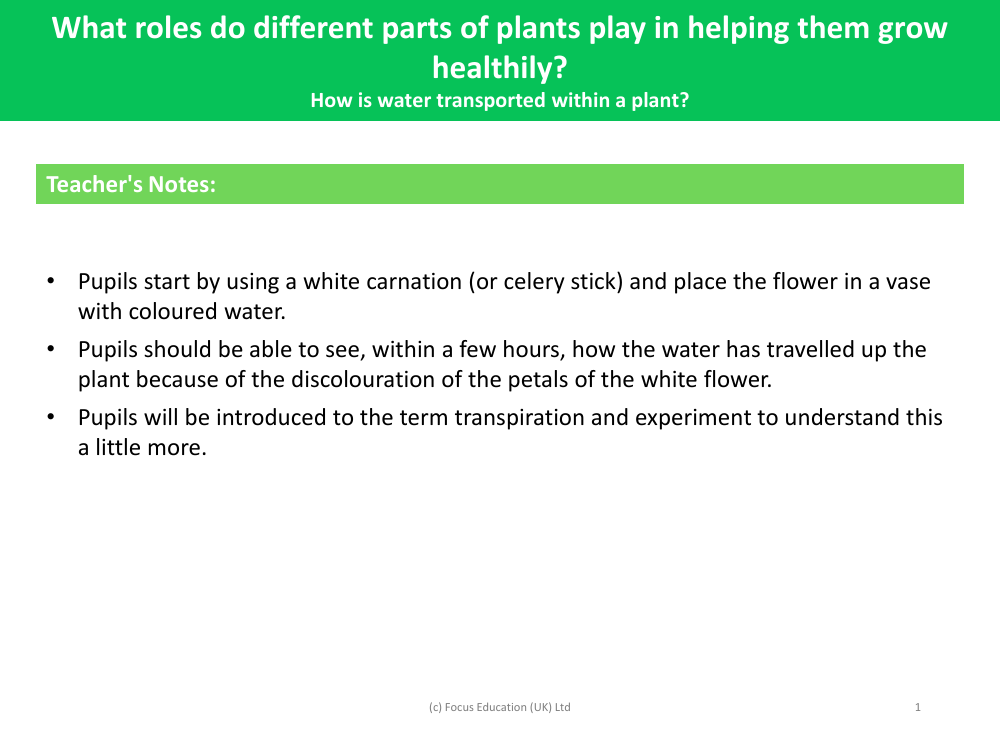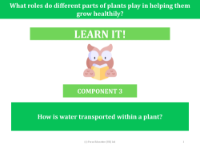How is water transported within a plant? - teacher's notes

Science Resource Description
Understanding how water is transported within plants is a key part of the biology curriculum. To illustrate this process, teachers can guide pupils through a simple and visual experiment. By placing a white carnation or a celery stick in a vase filled with coloured water, students can observe firsthand the movement of water through a plant. Within a few hours, the discolouration of the flower's petals or the celery will become evident, indicating the path that water has taken from the vase to the rest of the plant.
During this lesson, pupils will be introduced to the concept of transpiration, which is a crucial mechanism in plant water transport. This practical experiment provides a clear example of transpiration in action and helps students understand how water moves from the roots to different parts of the plant, contributing to its healthy growth. By observing the changes in the plant, pupils will gain a better appreciation of the roles that various plant parts play in water uptake and distribution, an essential function for plant survival and growth.


